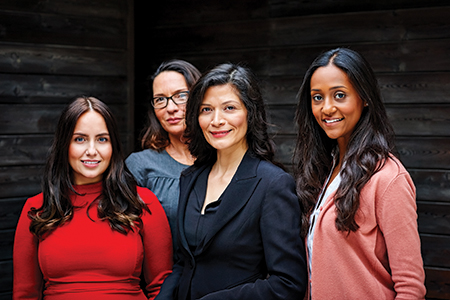
The statistics are captivating: American Express OPEN’s 7th Annual State of Women-Owned Businesses Report reveals that businesses owned by women of color have grown 467 percent since 1997. Numbering 5.4 million, minority women-owned businesses comprise 46 percent of all women-owned firms, have over 2 million employees and generate $361 billion in annual revenue.
In the recovering American economy, why aren’t women of color being touted as a powerful demographic?
Women are creating historic success in spite of difficulty accessing business capital, higher mortgage rates than men despite lower default rates and higher lifetime medical expenses. For women of color, a demographic that experiences high poverty levels, these circumstances take on an ever deeper significance. In 2016, the poverty rate reported by the U.S. Census Bureau for black women (21.4 percent) and Latinas (18.7 percent) was meaningfully higher than the 12.5 percent rate for women overall.
Furthermore, according to the National Women’s Law Center (NWLC), wage gaps endured by black (59 percent) and Hispanic (85 percent) women eclipse the current 25 percent gender pay gap. Asian women, who earn 87 cents for every dollar a man earns, are an exception.
How are women of color propelling their lives and careers forward in the face of opposition? Through willpower, sacrifice and an exceptional ability to make the most out of limited resources. In fact, a recent Urban Institute study examining loan performance shows that single borrowers, particularly women, are more likely to be minorities: about 34.1 percent of female-only borrowers are minorities, compared with 32.1 percent of male-only borrowers, 22.4 percent of male-female borrowers and 27.5 percent of female-male borrowers.
A Growing, Educated Market
According to Census Bureau population projections, from 2015-2060, Hispanic or Latina women will grow from 17.1 to 27.9 percent, black women from 12.7 to 13.3 percent and Asian women from 5.5 to 9.4 percent. Moreover, the Bureau of Labor Statistics (BLS) estimates that in the labor force from 2014-2024, Hispanic women will increase by 30.3 percent, Asian women by 24.3 percent and black women by 11.3 percent.
Important to note is that this progress for women of color is mirrored in education. The Census Bureau reports that since the year 2000, 25- to 34-year-old black and Hispanic women were “significantly ahead” of their male counterparts in bachelor’s degrees earned, and Asian women began to significantly surpass Asian men in bachelor’s degrees in 2010.
Supported by this expected growth, women of color are advancing gender equality and making an impact in the workforce that will be felt throughout the housing market and economy. As these women continue fueling their upward mobility, the elimination of gender gaps—both personal and professional—will only strengthen them and their influence in the women’s movement. The World Economic Forum (WEF) estimates that gender parity alone could add $1,750 billion to the gross domestic product (GDP) of the U.S.

 Login
Login

